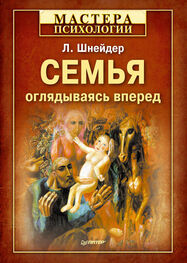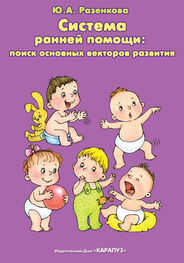Richardson, H. B. (1945). Patients have families. New York: Commonwealth Fund.
Richardson, H. В., Guralnick, M. J., &Tupper, D. B. (1978). Training pediatricians for effective involvement with preschool handicapped children and their families. Mental Retardation, 16, 3-7.
Richardson, S. A. (1970). Age and sex differences in values toward physical handicaps. Journal of Health and Social Behavior, 11, 207-214.
Richardson, S. A. (1972). People with cerebral palsy talk for themselves. Developmental Medicine and Child Neurology, 14, 521-535.
Richardson, S. A., Goodman, N., Hastorf, A. H., & Dornbusch, S. M. (1961). Cultural uniformity in reaction to physical disabilities. American Sociological Review, 26, 241-247.
Richardson, S. A., Goodman, N., Hastorf, A. H., & Dornbusch, S. M. (1963). Variant reactions to physical disabilities. American Sociological Review, 28, 429-435.
Robson, K. S., & Moss, H. A. (1970). Patterns and determinants of maternal attachment. Journal of Pediatrics, 77, 976-985.
Rogers, G. R. (1958). The characteristics of a helping relationship. Personnel and Guidance Journal, 37, 6-16.
Rolland, J. S. (1993). Mastering family challenges in series illness & disability. In E Walsh (Ed.), Normal family processes (2nd ed., pp. 444-473). New York: Guilford Press.
Rolland, J. S. (1994). Families, illness, and disability: An integrative treatment model. New York: Basic Books.
Romaine, M. E. (1982). Clinical management of the Spanish-speaking patient: Pleasures and pitfalls. Clinical Management in Physical Therapy, 2, 9-10.
Rose, S. (1974). Training parents in groups as behavior modifiers of their mentally retarded children. Journal of Behavior Therapy and Experimental Psychiatry, 5, 135-140.
Rose, S. D. (1974). Training parents in groups as behavior modifiers of their mentally retarded children. In L. Wilder & M. P. Keenan (Eds.), Developmental disabilities: No longer a private tragedy (pp. 159-165). Silver Spring, MD: NASW.
Rosengren, W. R. (1962). The sick role during pregnancy: A note on research in progress. Journal of Health and Human Behavior, 3, 213-218.
Roskies, E. (1972). Abnormality and normality: The mothering of thalidomide children. Ithaca, NY: Cornell University Press.
Ross, A. 0. (1964). The exceptional child in the family. New York: Grune& Stratton.
Rothman, В. K. (1978). Childbirth as negotiated reality. Symbolic Interaction, 1, 124-137.
Rotunno, M., & McGoldrick, M. (1982). Italian families. In M. McGoldrick, J. K. Pearce, & J. Giordano (Eds.), Ethnicity and family therapy (pp. 340-363). New York: Guilford Press.
Rousso, H. (February, 1984). Fostering healthy self-esteem. Exceptional Parent, pp. 9-14.
Rubel, A. J. (1960). Concepts of disease in Mexican-American culture. American Anthropologist, 62, 795-816.
Rubin, S., & Quinn-Curran, N. (1983). Lost, then found: Parent's journey through the community service maze. In M. Seligman (Ed.), The family with a handicapped child: Understanding and treatment (pp. 63-94). Orlando, FL: Grune & Stratton.
Safilios-Rothschild, G. (1970). The sociology and social psychology of disability and rehabilitation. New York: Random House.
San Martino, M., & Newman, M. B. (1974). Siblings of retarded children: A population at risk. Child Psychiatry and Human Development, 4, 168-177.
Scanlon, G. A., Arick, J., & Phelps, N. (1981). Participation in the development of the IEP: Parents' perspective. Exceptional Children, 47, 373-374.
Scanzoni, J. (1975). Sex roles, lifestyles, and childbearing: Changing patterns in marriage and family. New York: Free Press.
Scanzoni, J. (1985). Black parental values and expectations of children's occupational and educational success: Theoretical implications. In H. R McAdoo & J. L. McAdoo (Eds.), Black children: Social, educational and parental environments (pp. 113-122). Beverly Hills: Sage.
Schilling, R. F, Gilchrist, L. D., & Schinke, S. P. (1984). Coping and social support in families of developmentally disabled children. Family Relations, 33, 47-54.
Schipper, M. T. (1959). The child with mongolism in the home. Pediatrics, 24, 132-144.
Schonell, F J., & Rorke, M. (1960). A second survey of the effects of a subnormal child on the family unit. American Journal of Mental Deficiency, 64, 862-868.
Schonell, F J., & Watts, В. H. (1956). A first survey of the effects of a subnormal child on the family unit. American Journal of Mental Deficiency, 61, 210-219.
Schopler, E., & Mesibov, G. B. (1984). The effects of autism on the family. New York: Plenum.
Schorr-Ribera, H. K. (1987). Ethnicity and culture as relevant rehabilitation factors in families with children with disabilities. Unpublished manuscript, University of Pittsburgh.
Schreiber, J. M., & Homiak, J. R (1981). Mexican Americans. In A. Harwood (Ed.), Ethnicity and medical care (pp. 264-336). Cambridge, MA: Harvard University Press.
Schreiber, M., & Feeley, M. (1965). A guided group experience. Children, 12, 221-225.
Schulz, D. A. (1969). Coming up black: Patterns of ghetto socialization. Englewood Cliffs, NJ: Prentice-Hall.
Schulz, J. B. (1987). Parents and professionals in special education. Boston: Allyn & Bacon.
Schulz, J. В. (1993). Heroes in disguise. In A. P. Turnbull.J. M. Patterson, S. K. Behr, D. L. Murphy, J. G. Marquis, & M. J. Blue-Banning (Eds.), Cognitive coping, families, and disability. Baltimore: Brookes.
Schwab, L. O. (1989). Strengths of families having a member with a disability. Journal of the Multihandicapped Person, 2, 105-117.
Searle, S. J. (1978). Stages of parents reaction. Exceptional Parent, 8, 27-29.
Seligman, M. (1979). Strategies for helping parents of exceptional children: A guide for teachers. New York: Free Press.
Seligman, M. (1991a). Grandparents of disabled grandchildren: Hopes, fears, and adaptation. Families in Society, 12, 147-152.
Seligman, M. (Ed.). (1991b). The family with a handicapped child (2nd ed.). Boston: Allyn & Bacon.
Seligman, M. (1993). Group work with parents of children with disabilities. Journal for Specialists in Group Work, 18, 115-126.
Seligman, M. (1995). Confessions of a professional/father. In D. Meyer (Ed.), Uncommon fathers: Reflections on raising a child with a disability (pp. 169-183). Bethesda, MD: Woodbine.
Seligman, M., & Meyerson, R. (1982). Group approaches for parents of handicapped children. In M. Seligman (Ed.), Group psychotherapy and counseling with special populations (pp. 99-116). Baltimore: University Park Press.
Seligman, M., & Seligman, P. A. (1980, October). The professional's dilemma: Learning to work with parents. Exceptional Parent, 10, 511-513.
Seltzer, M. M., & Krauss, M. W. (1984). Placement alternatives for mentally retarded children and their families. In J. Blacher (Ed.), Severely handicapped young children and their families: Research in review (pp. 143-175). Orlando, FL: Academic Press.
Shapiro, J., & Tittle, K. (1986). Psychosocial adjustment of poor Mexican mothers of disabled and nondisabled children. American Journal of Orthopsychiatry, 56, 289-302.
Shereshefsky, P. M., Liebenberg, В., & Lockman, R. F (1973). Maternal adaptation. In P. M. Shereshefsky & L. J. Yarrow (Eds.), Psychological aspects of a first pregnancy and early postnatal adaptation. New York: Raven.
Shon, S. P., & Ja, D. Y (1982). Asian families. In M. McGoldrick, J. K. Pearce, & J. Giordano (Eds.), Ethnicity and family therapy (pp. 208-228). New York: Guilford Press.
Читать дальше



